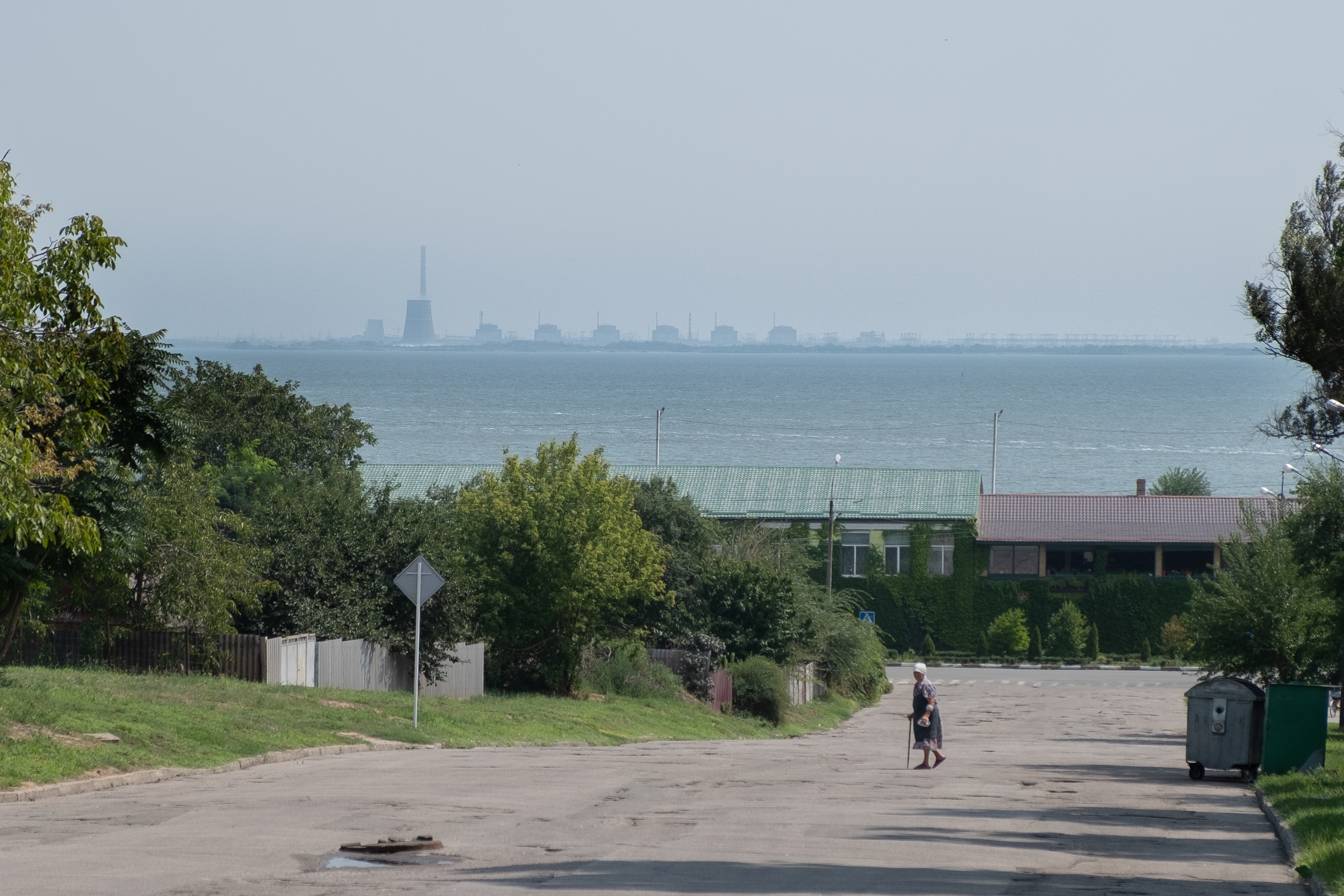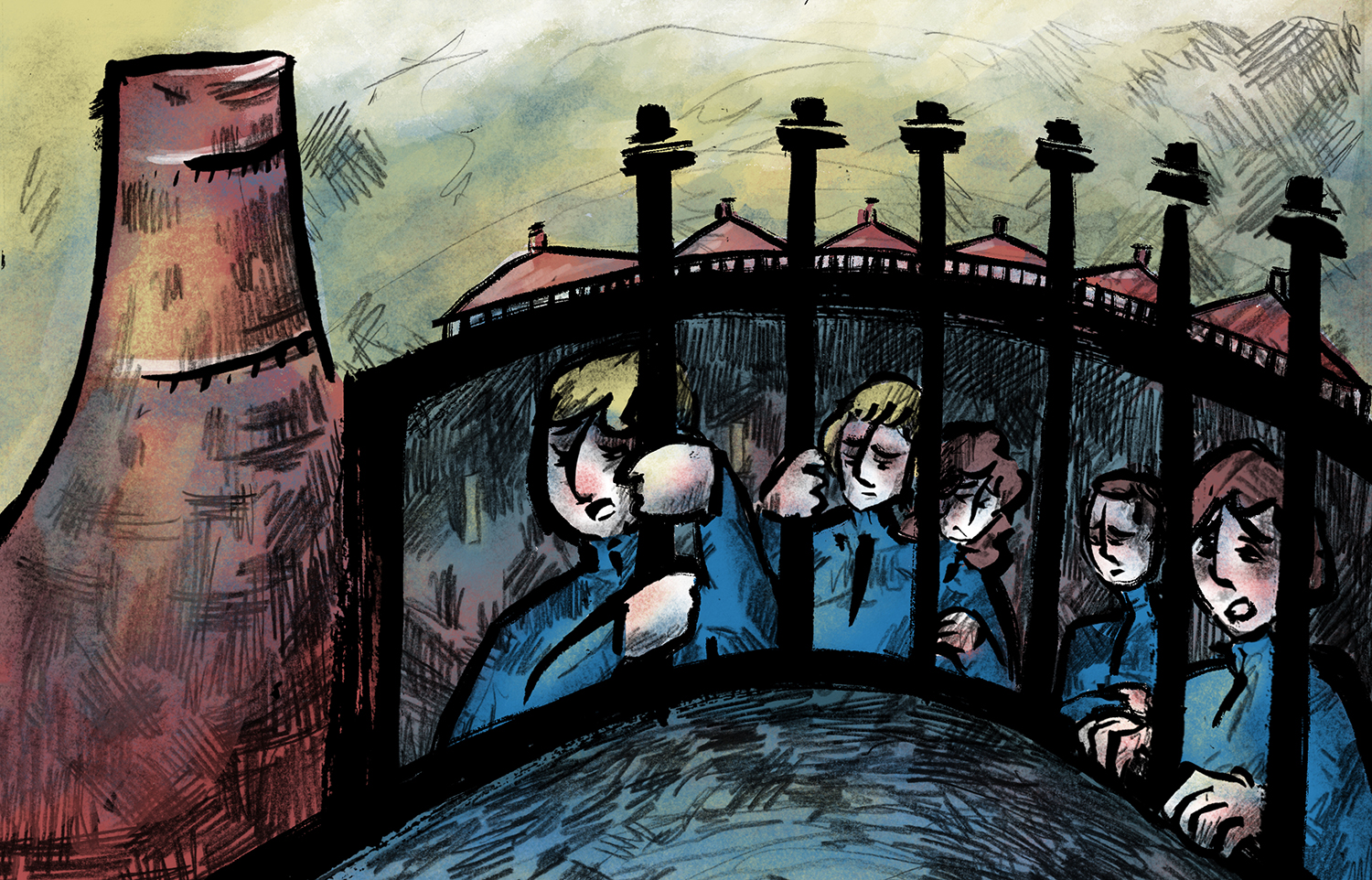On the edge of disaster: What could really happen if Russia destroys Zaporizhzhia nuclear plant?

In late June, 16 months into the full-scale Russian invasion, President Volodymyr Zelensky alerted his nation of an unprecedented threat.
Russia, the president said, had rigged the occupied Zaporizhzhia Nuclear Power Plant with explosives, and was ready to set off the charges and cause radiation to leak into surrounding areas.
“Russia uses the Zaporizhzhia nuclear power plant as an element in its aggression,” Zelensky said. “It occupies the plant. It uses it to cover the shelling of neighboring cities. It keeps weapons and troops there.”
The next day, Ukrainian military intelligence chief Kyrylo Budanov added fuel to the fire, telling The New Statesman that Moscow’s plan for an act of deliberate sabotage at the plant had been “drafted and approved,” and was simply waiting for the order to proceed.
The initial trigger for renewed attention to the threat of a disaster at the plant, intentional or not, was Russia’s destruction on June 6 of the Kakhovka Hydroelectric Power Plant, over 120 kilometers downstream on the Dnipro River.
While the areas downstream in Kherson Oblast were quickly consumed by devastating floodwaters, the 2,155 square-kilometer Kakhovka reservoir emptied out over the space of a few days.
On top of the other devastating environmental impacts of the disappearance of this inland sea, concerns were immediately raised about the cooling pond of the plant, which initially threatened to dry up without being replenished by the reservoir’s water.
Initially, some Ukrainian officials looked to subdue concerns about the effect of the dam on the nuclear plant, but soon, the threat of a deliberate act of nuclear terror once again raised its head.
The warnings from Zelensky and Budanov were met by a flurry of media attention, producing photoshopped graphics of a nuclear blast on the riverside and frightening maps of where a new exclusion zone would strech across large swathes of Ukraine, a country for whom the memory of the Chornobyl disaster in 1986 still lives strong.
Plans have been made for evacuations from nearby areas, while drills preparing for a nuclear accident began in Ukraine’s southern regions on June 30.
On the same day, Ukrainian military intelligence reported that both Russian security forces and plant workers were leaving the area. The report said that they all had instructions to leave by July 5, giving speculation of a disaster a clear deadline.
By July 4, the situation took on another level of seriousness, with Russian Telegram channels warning that on the night of July 5, Ukraine would create a nuclear disaster with three possible methods, each equally ridiculous. According to the theory, Ukraine would first attack the plant with high-precision missiles and drones, while similtaneously flying overhead to drop a so-called “dirty bomb,” not triggering a nuclear explosion but carrying a large amount of contaminated material. As a back-up, the posts claimed without any evidence, a Tochka-U ballistic missile with a dirty bomb warhead would also be fired at the plant.
The claims, almost word for word in all their absurdity, were soon parroted by Renat Karchaa, advisor to the chief of Russian state nuclear energy agency Rosatom, and the same person who had once tried to convince monitors from the International Atomic Energy Agency (IAEA) that a Russian rocket that landed near the plant was actually Ukrainian, it had just changed direction by 180 degrees in flight.
In the evening, the Ukrainian General Staff reported that what looked like explosive devices were placed upon the wings of two reactor buildings at the plant. According to the report, the placement of the devices looked to be designed deliberately to make an explosion or series of explosions at the plant look like a Ukrainian strike.
On July 5, having visited some parts of the plant, the IAEA reported to have found no evidence of explosives placed, though the delegation hasn’t yet been granted access to the turbine halls or the reactors which the General Staff reported to be mined.
But with none of the facility’s six reactors, all of which built to much higher safety standards than those in Chornobyl, currently properly operational, the idea of causing nuclear catastrophe by “blowing up the Zaporizhzhia Nuclear Power Plant” is an abstract one at best.
With Russia in full control of the plant and its workers, technical, military, and political factors will determine if such an accident will happen, and, most importantly, what effect it will have on Ukraine and the war.
The story so far
The Zaporizhzhia Nuclear Power Plant was first occupied by Russian forces in March 2022, after a dramatic attempt by residents of the neighboring city of Enerhodar to block the road was overcome by force. During the short battle, Russian forces fired multiple times on the plant itself.
Thus started 16 months of occupation, in which the plant has suffered from sporadic shelling, some of which, according to the IAEA, was the cause of external power lines to the facility being cut off at one point in November.
Over this time, independent investigations have shown how Russia has used the plant as a shield for its armored vehicles and artillery, with which Russia has shelled Ukrainian settlements on the other side of the Dnipro River.
Speaking to the Kyiv Independent in August last year, residents of Nikopol, directly opposite the plant and only around five kilometers from the facility, gave eyewitness accounts of how Russian Grad multiple rocket launchers would fire upon their city from right beside the reactor buildings, testimonies soon backed by video evidence.

In the early months of the ZNPP’s occupation, local plant workers continued to carry out orders from the Ukrainian state nuclear energy agency Energoatom, though under close supervision from Russian forces.
According to the report of the IAEA’s first monitoring visit to the plant in early September, 40% of positions at the plant were unstaffed, with the staff often working overtime in stressful conditions that greatly increased the chance of human error.
On Sept. 15, the IAEA Board passed a resolution calling on Russia to leave the ZNPP. Around the same time, a month before Russia began its campaign of mass attacks against Ukrainian energy infrastructure, the ZNPP was disconnected from the Ukrainian energy grid.
At the moment, five of the six reactors are in cold shutdown, in which chain fission reactions have ceased, the nuclear material itself is significantly cooler, and in turn, much less coolant is required to keep the core stable.
The last remaining reactor is in warm shutdown, where, with the help of an outside source of electricity, the temperature of the fuel doesn't fall below 250 degrees.
“Steam is still created and used for many reasons, including the heating of Enerhodar,” said Mark Zhelezniak, a Ukrainian professor at the Institute of Environmental Radioactivity Fukushima University in Japan.
On June 8, two days after the Kakhovka dam’s destruction, the IAEA called for the last reactor to also be brought into cold shutdown, with which it initially seemed that Russia would comply. A week later though, and the Ukrainian State Inspection of Nuclear Regulation reported that Russia was preventing the Ukrainian workers from completing the shutdown.
Threats and scenarios
Foreseeing the possible scale, and danger of “Russia blowing up the ZNPP” is impossible without understanding the nature of the plant’s reactors and how they can possibly melt down in their current state.
A truly serious nuclear accident, as in Chornobyl and later in Fukushima, Japan in 2011, is caused by a meltdown of a reactor core, itself a result of an out-of-control overheating of radioactive fuel.
Having worked on the effects of both the Chornobyl and Fukushima disasters, there are few who can compare the two to the Zaporizhzhia plant better than Zhelezniak.
According to him, while both disasters offer important lessons for projecting the impact of an accident at the ZNPP, they also show how dramatically the current set of circumstances differs from 1986 and 2011.
First and foremost, Zhelezniak seeks to debunk many of the damaging falsehoods often shared in Ukrainian and world media, especially of huge arbitrary exclusion zones drawn over maps of Ukraine and Europe.
“This is complete nonsense,” Zhelezniak said regarding the Chornobyl comparisons, “unfortunately, evaluations are often made by people without the required technical background.”
“Imagine we have six barrels of paint next to each other (representing nuclear reactors), and we put a grenade in each of them. If one barrel explodes, paint will spread out over a given radius, but if all six explode, the concentration of paint will be higher but the radius will be the same.”

The fact that the reactors at the ZNPP are all but shut down greatly reduces the risk of a quick dramatic meltdown.
“When this happens, the fuel starts to overheat, and if the reactor is working this is a very quick process,” Zhelezniak said. “If the reactor is shut down, this process takes much longer, and there might not be any explosion at all.”
Beyond that, the consequences of a nuclear accident also depend highly on the type and quantity of radionuclides released.
“In Fukushima we had the meltdowns of reactors that were working. There, in the fission process, you have plutonium created, caesium, and radioactive isotopes of iodine. Each of these has their own half life.”
Iodine-131, one of the most dangerous isotopes in the first days of a nuclear disaster, has a half life of eight days.
“At the ZNPP, the last reactors were shut down in September last year, it's been 10 months, so the obvious conclusion is that there is no more iodine,” Zhelezniak added. His comment reflected an announcement by Ukraine’s State Scientific and Technical Center for Nuclear Safety, which specifically told citizens that there was no reason to take iodine pills in the event of an accident.
Though the risks are lower in some ways, with the threats to the ZNPP, there is a different, dangerous new factor that was not present in previous accidents: the deliberate, man-made nature of the looming destruction.
Given this, Zhelezniak argues, a second scenario is possible. Russia could restart the work of some or all of the reactors to a fully-operational setting in advance, significantly increasing the contamination caused by a possible meltdown.
Restarting the reactors in cold shutdown can take up to a week, but can be done relatively quickly for the one in hot shutdown. In any case, the deliberate meltdown of a fully working reactor at the ZNPP will be a different beast.
“This means it will produce electricity, it will start producing iodine again, and then you will have more energy in the reactor, hotter fuel which could then burn, and so on,” said Zhelezniak, who loosely predicted an initial exclusion zone with a 40-50 kilometer radius in such a scenario.
The contamination of the surrounding area in such a scenario would still depend heavily on weather patterns, and would not result in very serious, let alone lethal, doses for civilians if they are evacuated in a timely manner, Zhelezniak said.
More importantly, the timing and concrete actions required inside the plant would make it near impossible to blame it on a Ukrainian strike.
Murky motivations
With the above-mentioned possible scenarios for a deliberate nuclear accident at the ZNPP, the one that could come into fruition depends greatly on Moscow’s political motivations.
First, there is a question of timing. Russian and Ukrainian claims made in the last few days imply that an attack on the plant could occur in the immediate future, with Russia still in full control of the plant.
Other theories assert that Russia has rigged the ZNPP with explosives, but only in anticipation of the moment when Russian forces are forced to vacate Enerhodar in the face of a Ukrainian counteroffensive. But with Ukrainian forces making slow progress in Zaporizhzhia Oblast, where the active front line (not counting the river itself) is still over 70 kilometers away from the plant’s boundaries, such a scenario is unlikely to come about soon.
For Zhelezniak, it is the psychological idea of a nuclear disaster rather than an actual massive emission of radiation that is the most powerful tool in Russia’s hands.
“If we read one day that radiation has begun leaking from the Zaporizhzhia Nuclear Power Plant,” he said, “especially if it happens when Ukraine takes control of the area, imagine what kind of reaction there will be from the European population.”
“Everyone will be in shock, everyone will be worried that a radioactive cloud will drift over Europe. There will be a lot of pressure on Ukraine to stop the fighting, control the situation, so there is no chance of it getting worse.”
The scenario of a slower, more deliberate orchestration of a meltdown, in Zhelezniak’s view, is unlikely given the potential political consequences.
“I don't believe in this,” he said. “I believe that they could orchestrate an explosion in the cooling system, and immediately blame it on Ukraine, but if they turn on the reactor themselves and then destroy the cooling system, it will be a blatant act of nuclear terrorism, the open use of the reactor as a weapon.”
The VVER (“water-water energy reactor”) reactors at the ZNPP are also the same type still being constructed in Bangladesh, China, Egypt, Turkey, and even Hungary by Rosatom, which would undoubtedly face a global public backlash and could lose these contracts.
Others, however, argue the opposite. With the Ukrainian counteroffensive ongoing, a breakthrough against Russian lines in the south could place Vladimir Putin in a position with no positive military solutions, the threat remains of a deliberate terrorist attack carried out from a position of desperation.
Even if a nuclear accident isn’t immediately set off, the plant remains a tool of blackmail in Russia’s hands, argues Ukrainian political scientist Mykola Davydiuk, who equates a disaster at the plant with the use of a nuclear weapon or dirty bomb by Russia.
“This is the weapon of a revenge player: ‘If you don't want to play by my rules I will throw a tantrum and destroy this sandpit’ – this is Putin's thinking,” Davydiuk said.
“The biggest problem, I think, is that he sees nuclear weapons as the single biggest argument not to lose officially and not to admit defeat, and he tries to establish this every time through threats and fear of the West.”
In this context, the destruction of the Kakhovka dam is a dangerous precedent: a rash, indiscriminate act of terror, combined with a lukewarm international reaction as the world’s governments entertained both sides’ accusations of the other being responsible.
“This is the most significant problem,” Davydiuk said, “Russia is always trying to sow doubt everywhere, but with Kakhovka, where an appropriate reaction from all the world leaders was needed, we were dragged into this atmosphere of suspicion.”
“Elementary analysis suggests that the one who controls and occupies the territory is responsible for it, still, the Russians turned the bombing into a situation where Ukraine had to prove on a diplomatic level that it wasn’t done by its military, and this became a preparation for a potential terrorist attack on the ZNPP.”
For now, Ukraine and Europe are watching and waiting. Whatever scenario proves to be the correct one, spreading panic about massive exclusion zones and lethal doses of radiation is likely to play into Russia’s hands.
In the meantime, warning of the threat and preempting Russian propaganda narratives looking to place the blame on Kyiv will be crucial.
Note from the author:
Hi, this is Francis Farrell, cheers for reading this article. I grew up on the other side of the world, but in Ukraine I have found a home unlike any other. Just like with so many of our readers, I understand that you don't have to be from near here to realize how important Ukraine's struggle is for freedom and human rights all over the world. The Kyiv Independent's mission is to lead the way in continuing to bring the best homegrown, English-language coverage of this war, even if the rest of the world's attention starts to fade. Please consider supporting our reporting.

















